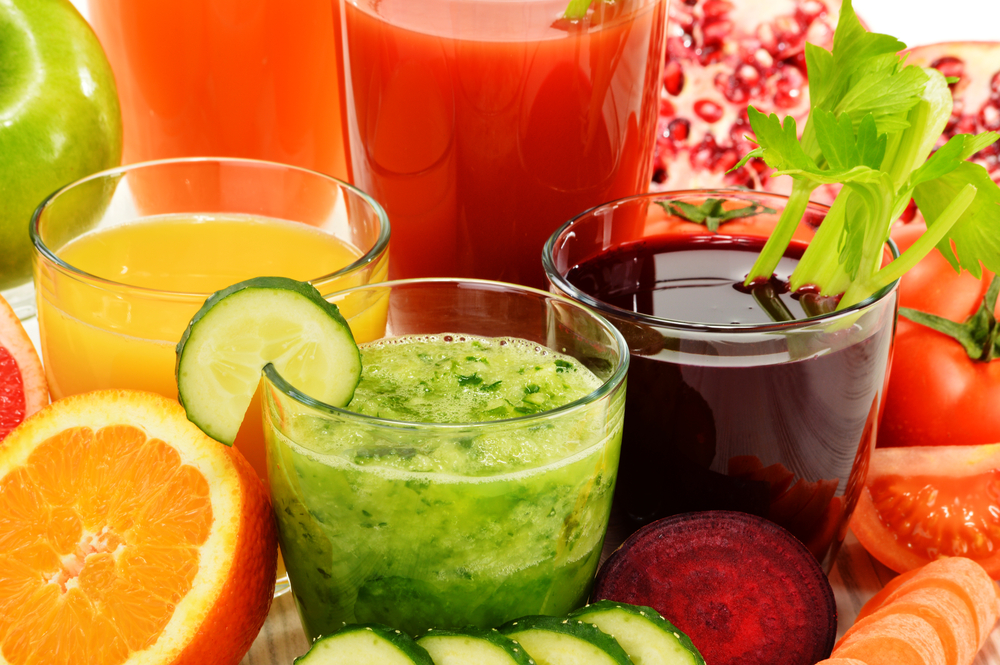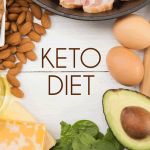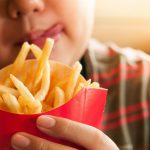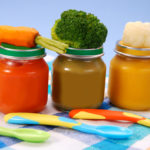
A type of detox diet, a juice cleanse involves consuming fruit and vegetable juice for a short time frame, ranging from three to 10 days.
It is also better known as a juice fast.
How to do the juice cleanse diet at home?
There are many different versions of juice cleanses. The most common practice involves consuming homemade fresh fruits and vegetables that have been juiced or pulverised in a blender.
Some variations of the juice cleanse diet incorporates one or more serving of smoothies per day to account for protein, fat and other nutrients – all of which are needed to give you energy and curb hunger pangs.
A typical juice cleanse has three important stages:
Preparation
For three to five days prior to commencing the cleanse, certain foods should be eliminated to reduce headaches, cravings and other withdrawal symptoms. These include coffee, refined sugar, meat, dairy products, wheat, alcohol and nicotine. You should also up your intake of fresh vegetables, fruits and fluids during this stage.
Cleanse
While doing the cleanse – which can range from three to 10 days – you should drink at least 32 ounces of juice or smoothie. Half of what you drink should be made up of green vegetable juice.
After the fast
The tough times are over!
Once you are done with the juice cleanse, it is recommended to eat small portions for the first few days. You will then add your usual foods back into your diet over the next few days.
Read also: How I Embraced the 40s: Real-life Tips to Manage the Perimenopause Symptoms
Examples of juice blends
To help you get started, some examples of juice blends which you can use while doing the cleansing include:
- Apple, cucumber, celery, romaine lettuce, lemon, spinach, kale and parsley
- Apple, lemon, ginger and beet
- Apple, pineapple, lemon and mint
- Filtered water, cayenne, lemon, almonds, dates, sea salt and vanilla bean
Drinking six servings of these juice combinations daily will provide a caloric intake of 1,310.
Can you eat during a juice cleanse?
Typically, the key component of the juice cleanse diet is raw, organic juice. However, for those who are new to juicing and need a little bit more to sustain, vegan and gluten-free meals and snacks are great options. For some people, a modified juice cleanse can also incorporate a salad or vegetable broth.
Room temperature or lukewarm water may be consumed in between each juice serving or meal to ensure hydration.
Check this website for more juice cleanse recipe ideas.
Potential juice cleanse benefits
Those who have done the juice cleanse regularly claim that there are many benefits to be sought from doing this.
Some of the benefits include:
A nutrient boost
The juice cleanse diet involves consuming fruit and vegetable juices, which are high in vitamins and minerals. Thus, this introduces extra nutrients into the body and helps to boost our overall health and well-being.
Improved immune system
Juices are known to be rich in anti-inflammatory compounds that may boost the immune system. Apart from benefiting your overall health, it helps you to feel more energetic too.
Better digestion
Fruit and vegetable juices are said to help improve digestion through the addition of healthy enzymes that promote better gut health and aids in removing toxins from the body.
While the potential benefits of juice cleanse is commonly discussed, there is no scientific proof to support these claims, thus far.
Potential risks of juice cleanses
While the benefits of a juice cleanse remains unvalidated for now, medical experts and health professionals have identified the risks that juice cleanses could bring. These include:
Kidney issues
Some types of juice contain oxalate, a type of acid that can trigger kidney stones and other kidney problems. Thus, drinking juices in large amounts may not be ideal for those with kidney disorders.
Short term weight loss
Juice cleanse diets are usually low in calories. While reducing your calorie intake may result in temporary weight loss, this effect is short term – causing your weight to bounce back once you resume your regular food intake.
What’s more, consuming an insufficient amount of calories can trigger symptoms related to low blood sugar – including fainting spells, dehydration, headaches and hunger.
Bacterial contamination
Juices that are unpasteurised or have not gone through a heating treatment to remove bacteria puts one at risk of illness. Thus, the consumption of such juices is not ideal for children, older people and those with weakened immune systems.
Read also: How I Keep Things Balanced As A Work From Home Mum
To juice cleanse or not?
As there are currently no medical claims or research to support the effectiveness and benefits of juice cleanses, they are not deemed as a long term solution for weight loss and health. Most healthcare experts would recommend opting for a balanced, healthy diet instead.
However, if you are still keen to give the juice cleanse a try, do speak to your doctor about this to ensure that it does not compromise your health.























